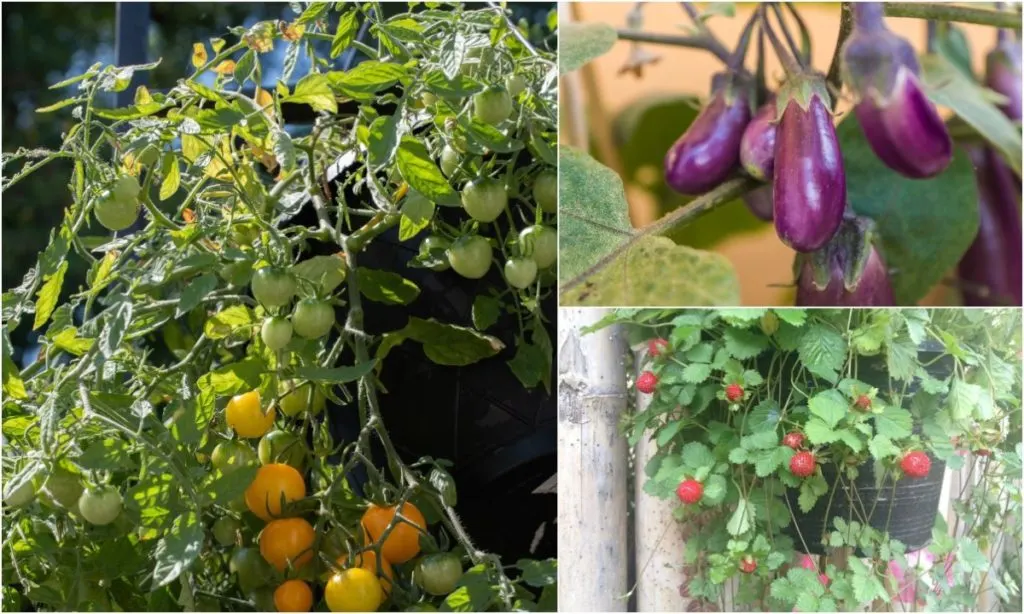
Hanging baskets don’t just have to look good. They can also produce food for you and your family.
By choosing edibles to grow in hanging baskets, you can create something useful and beautiful. Hanging baskets (whether they’re actually baskets, or are other hanging containers) can be great. They help you make the most of any and all space you have available.
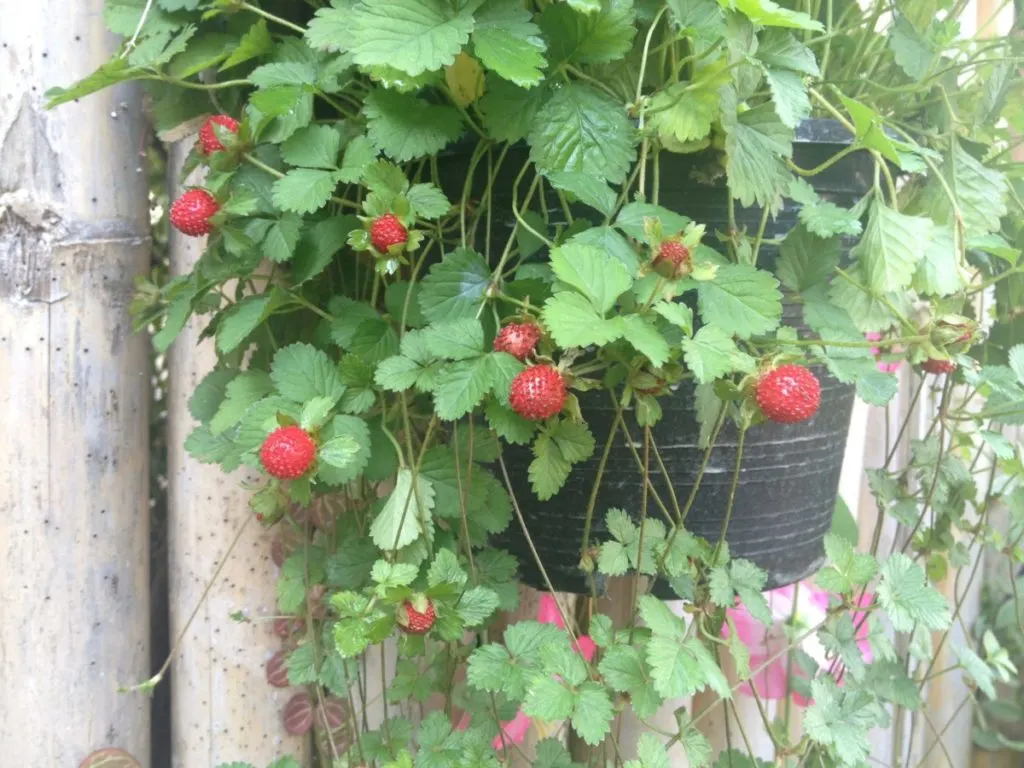
Why Grow Edible Crops in Hanging Baskets?
You may be surprised by how vibrant and attractive edibles can be. Just because a hanging basket is used to grow food, doesn’t mean it has to be dull or boring. It can provide just as much interest as one filled with non-edible flowers.
In this article, we’ll take a look at 37 different plants you can grow in hanging baskets – from fruits and vegetables to edible flowers and herbs.
But before we take a look at those options, let’s take a moment to look at all the reasons it’s a good idea to grow crops in hanging baskets.
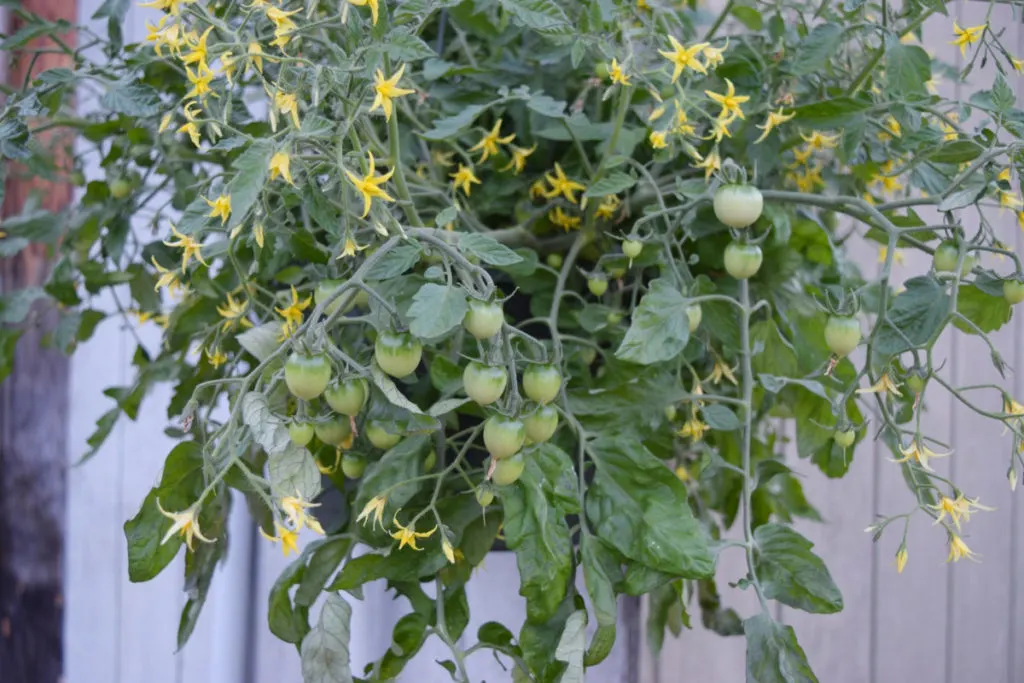
Edible hanging basket arrangements:
- allow you to maximise the amount of food you can grow in a small garden, or in a polytunnel or greenhouse.
- give you growing space (on a balcony or outside wall, for example) when you have no outside in-ground growing space.
- enliven/ beautify an ugly or boring wall or fence, while still serving a very practical purpose.
- help you garden organically by attracting pollinators and other beneficial wildlife, even where you only have a paved area for container planting.
- keep edible crops off the ground and safe from certain pests. It keeps peas and leafy greens safe from mice and voles and other rodents, for example, and avoids slug damage problems.
- can improve air flow for plants, and reduce disease.
- help keep plants up and away from soil-borne diseases.
Fruits and Vegetables for Hanging Baskets
First of all, let’s take a look at fruits and vegetables. There are a surprising number of crops you can grow in hanging baskets – if you choose the right varietals. Here are some of the options I would recommend:
1. Tomatoes
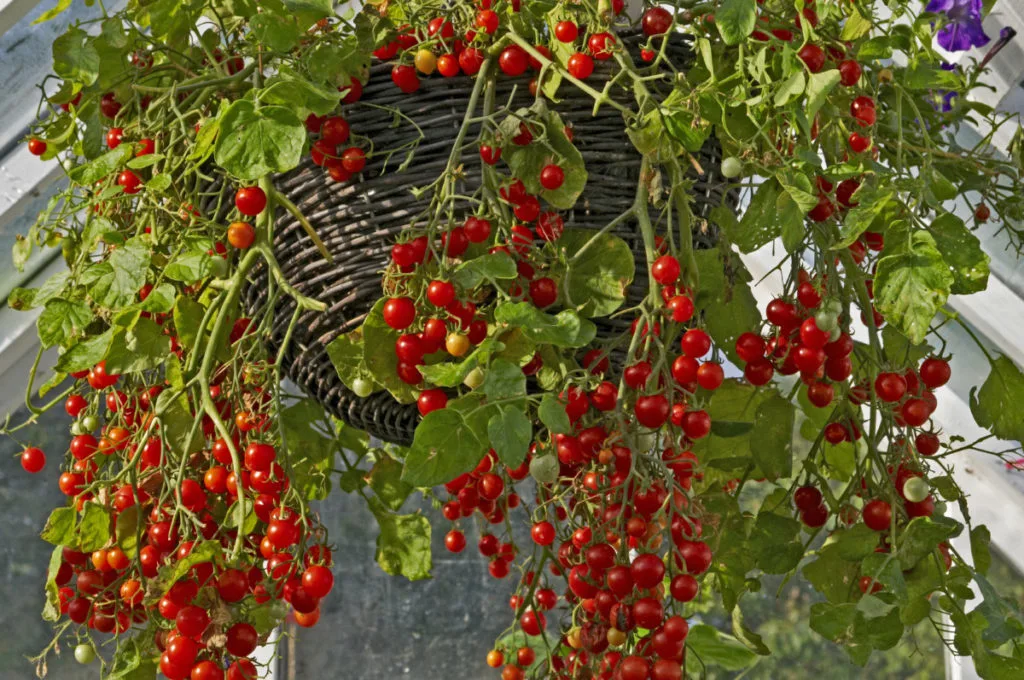
Growing tomatoes in hanging baskets is a popular and interesting option. Certain varieties of tumbling tomatoes are specifically suited to cascading over the edge of a basket. But many bush tomatoes can be grown in hanging containers, and you can even grow them upside down, trailing down from the bottom of a hanging container.
Here are some tomatoes ideal for growing in hanging baskets:
- Tumbling Tom
- Micro Tom
- Baxter’s Early Bush Cherry Tomato
- Whippersnapper
- Red Robin
- Roma
- Celebrity
- Gold Pearl
- Aztec Micro Dwarf
- Bonsai Micro Dwarf
Though generally speaking, all tumbling, and most determinate tomato varietals are suitable for growing in hanging baskets.
2. Strawberries
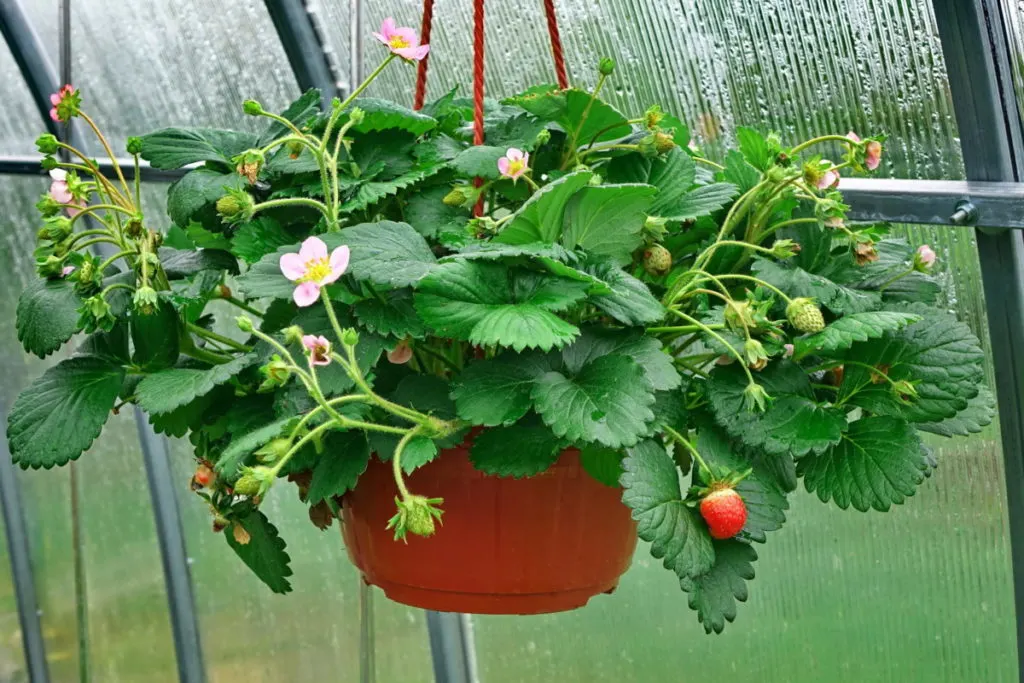
Strawberries are another great and popular choice for hanging baskets. Though June-bearing strawberries can be grown in hanging baskets, generally it will be better to opt for everbearing or day-neutral Fragaria x ananassa.
Some good examples of garden strawberries that are great for hanging baskets are:
- Albion
- Evie
- Mara des Bois
- Ogallala
- Quinalt
- Tribute
- Tristar
Also consider alpine strawberries, which can be grown in partial shade.
Options include, but are not limited to:
- Mignonette
- Rugen Improved
- Yellow Wonder
3. Peppers
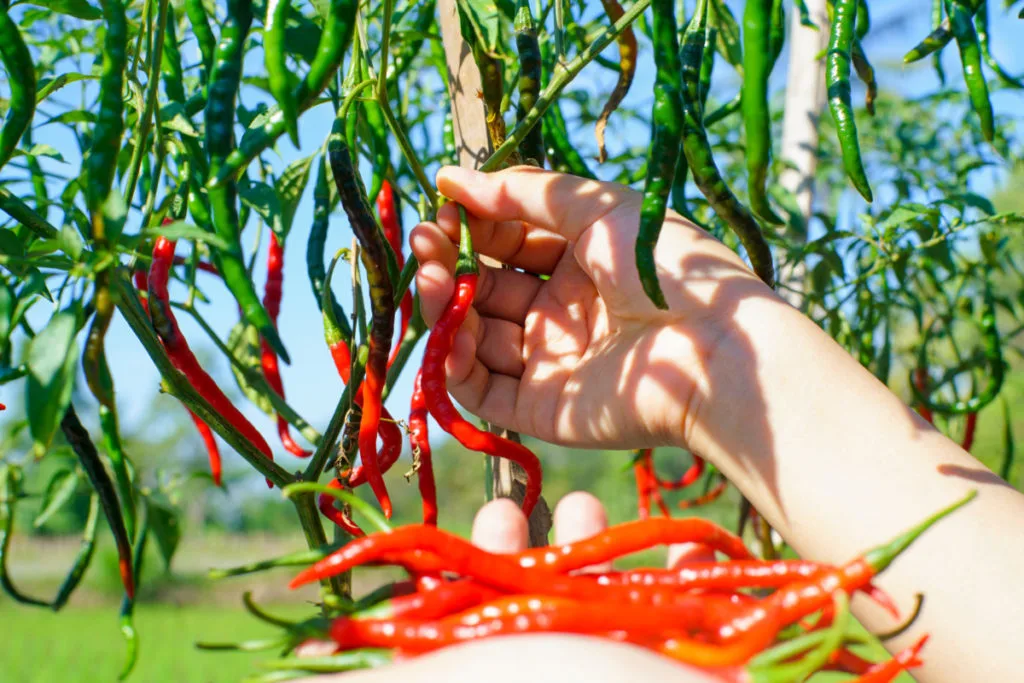
Peppers (both chili peppers and certain sweet pepper varieties) can be great to grow in baskets. Varieties that work well in a hanging basket include any small and relatively compact plants. For example, chili peppers like:
- Apache
- Basket of Fire
- Fuego
- Prairie Fire
- Pretty in Purple
- Pyramid
- Razzamatazz
And sweet peppers such as:
- Redskin
- Sweet Sunshine (Trailing)
- Tangerine Dream
4. Eggplant
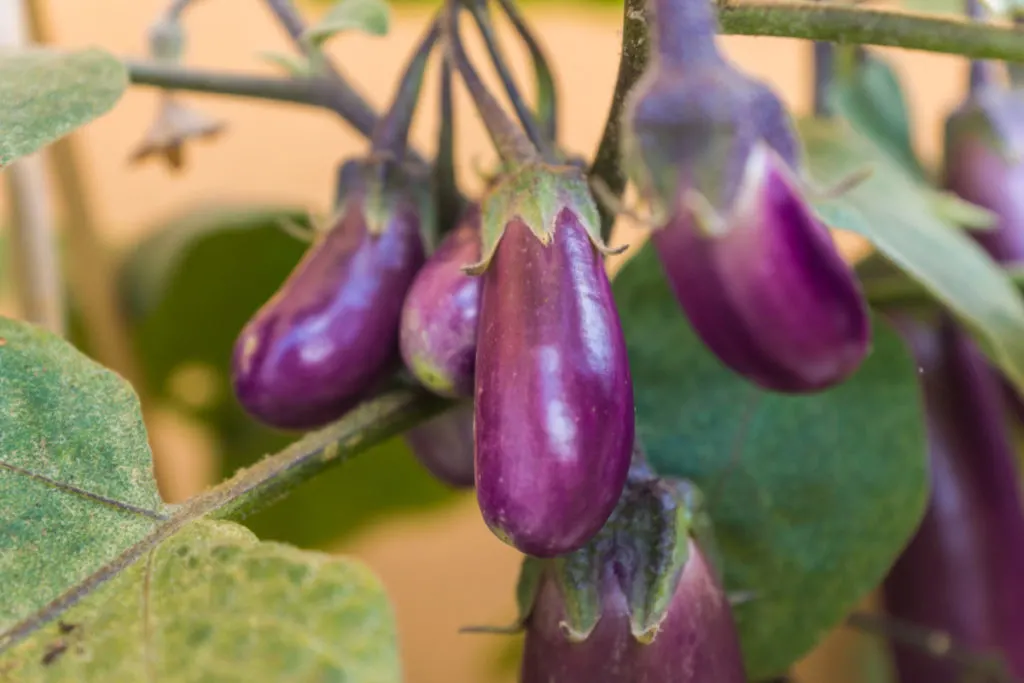
If you want to grow eggplant in hanging baskets, it’s important to choose a dwarf variety. Patio Baby is one variety you could consider. The fruits on this and other suitable varieties are only 2-3 inches in size.
5. Tomatillo
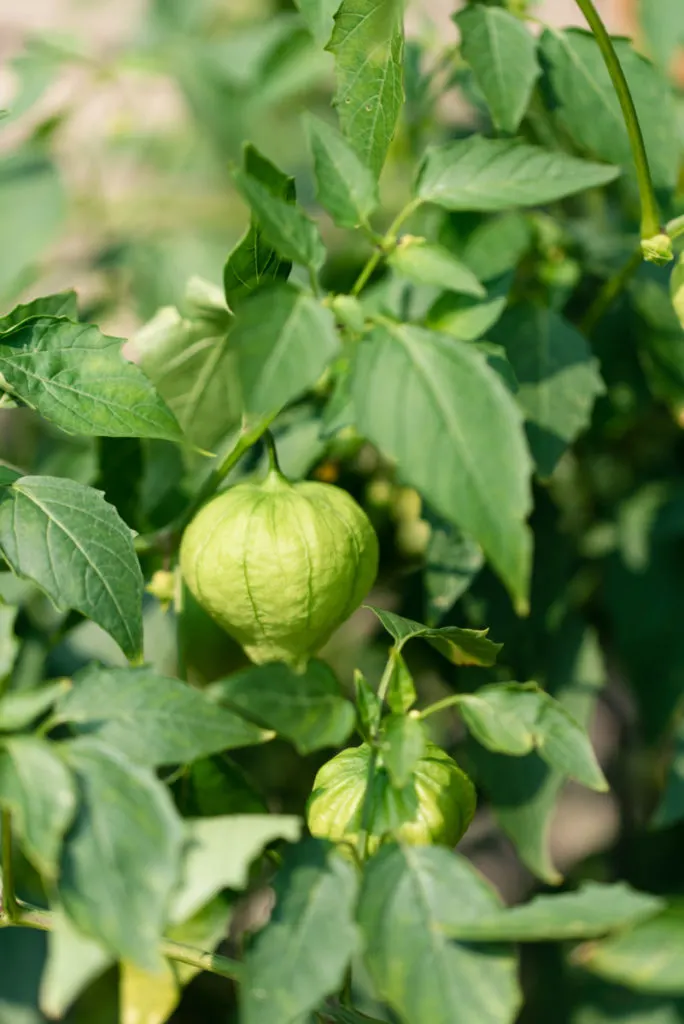
The tomatillo (Physalis ixocarpa) is related to the tomato. You need a long season to be able to grow them, or they can be grown undercover in a hanging container. These plants will trail over the sides of your basket or container, or, like tomatoes, can be grown from the base of the receptacle.
For more information on how to successfully grow tomatillos, check here.
6. Cape Gooseberries
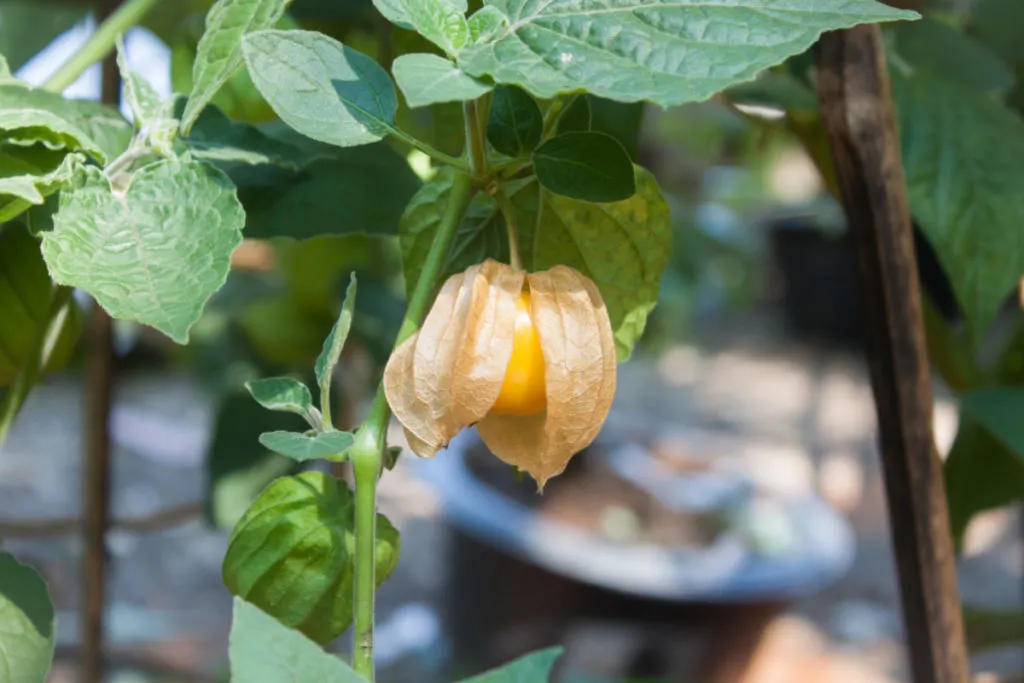
A similar and related plant is the cape gooseberry, or ground cherry (Physalis peruviana). These are also a great option for hanging baskets or other suspended containers. Like tomatoes and tomatillo plants, they will trail over the sides, or can be grown upside down.
7. Cucumbers
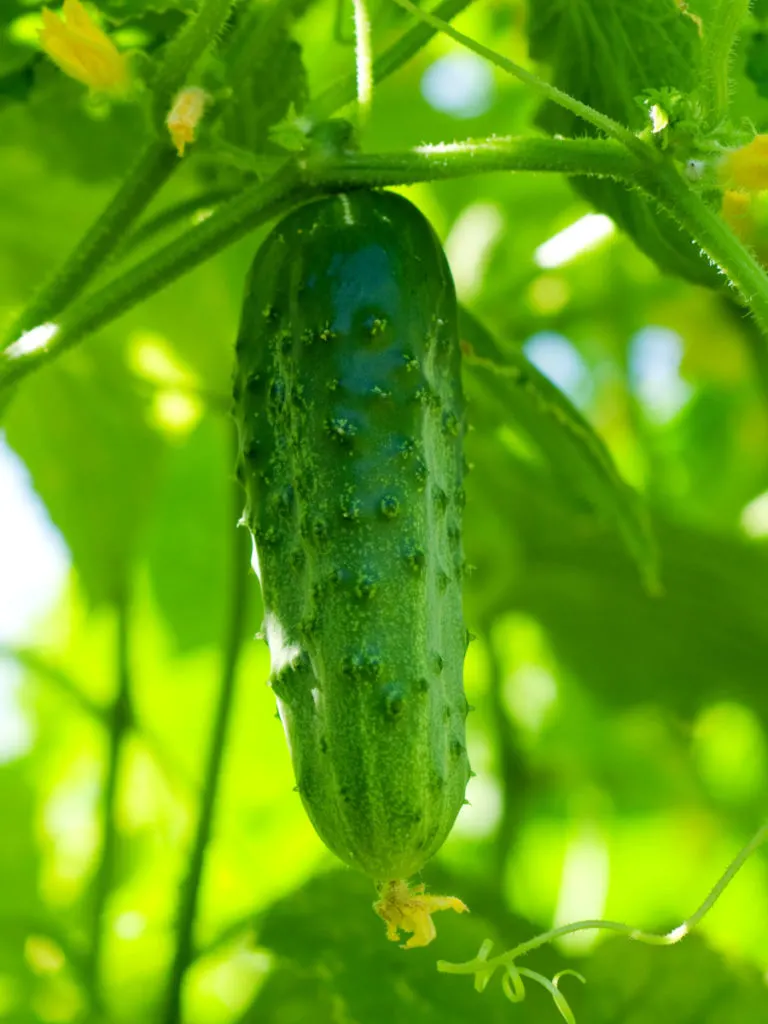
Cucumbers are another plant that can be allowed to trail from a hanging basket. There are a number of different cucumber varieties that work well. Good options include Patio Pickle and Summer Dance. These, and other dwarf varieties, are more likely to thrive in the limited space a hanging basket can provide.
8. Cucamelons
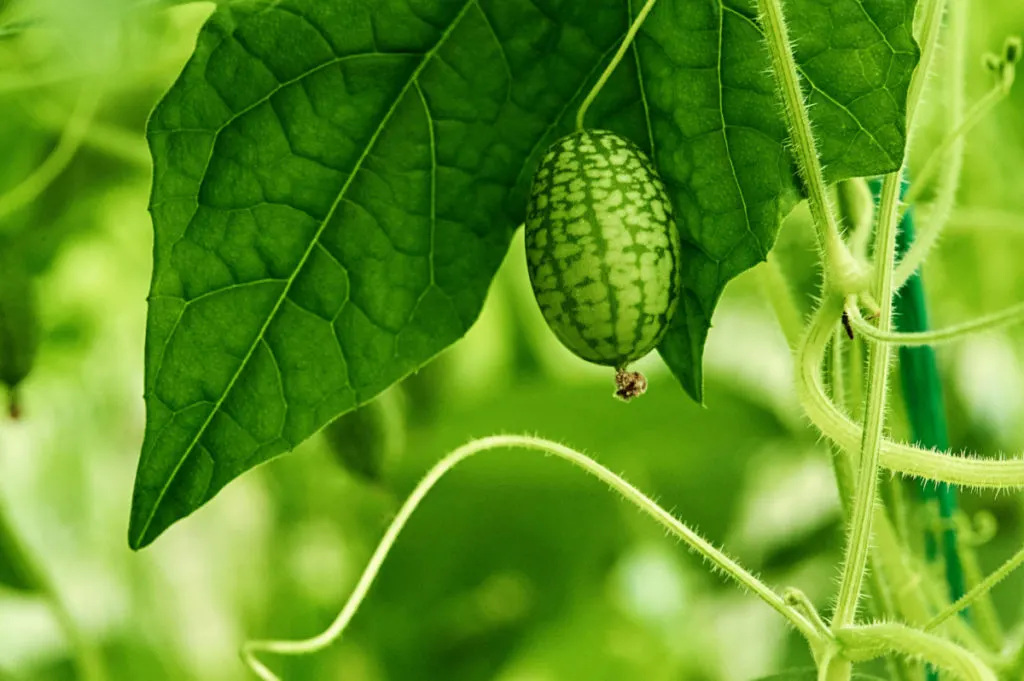
The cute cucamelon is another trailing plant to grow in a suspended container or hanging basket. The small cucumber-like fruits shaped like little watermelons cascade pleasingly over the edge. Also known as mouse melon, the Mexican sour gherkin cucumber can take up a lot of space – so growing them in this way is a great way to make the most of the space you have available.
Want to grow cucamelons? Start right here.
9. Zucchini
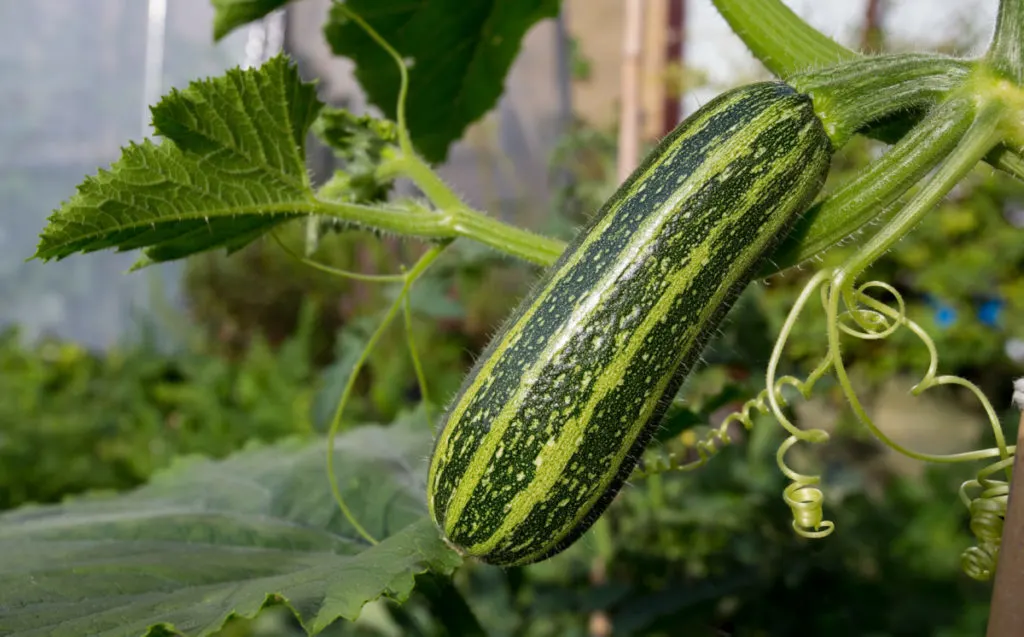
A single zucchini plant can grow in a hanging basket or another reasonably large hanging container. Though these are hungry plants, growing them in a basket is possible as long as you fertilize them regularly.
10. Sweet Potato
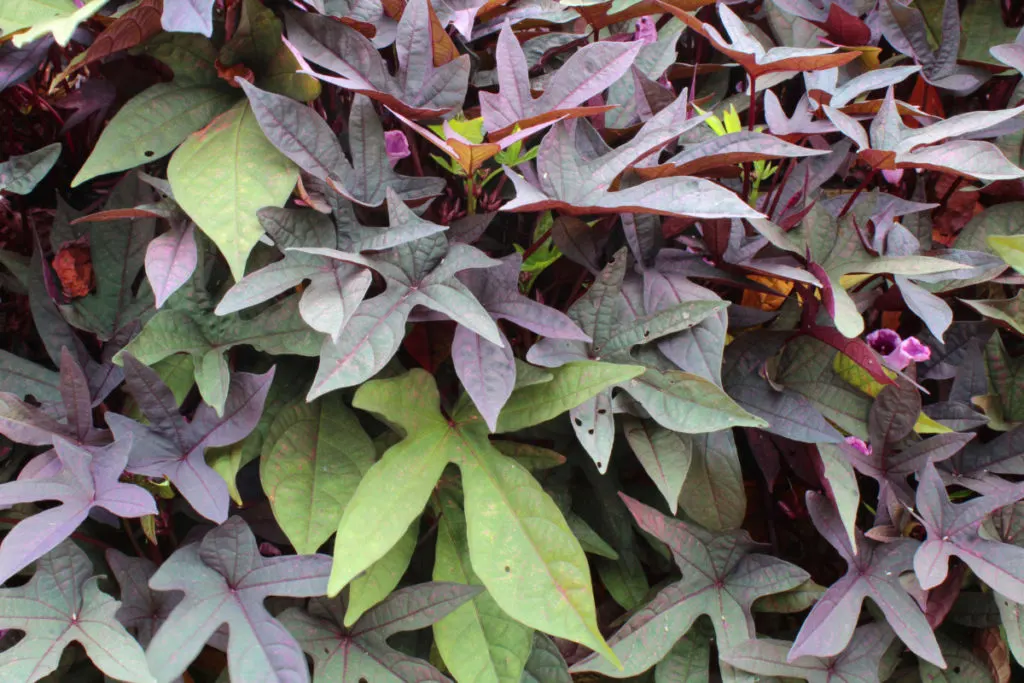
Trailing sweet potato vines look great in a hanging basket. Simply plant your slips in the container, and allow the long vines to trail over the sides.
11. Peas
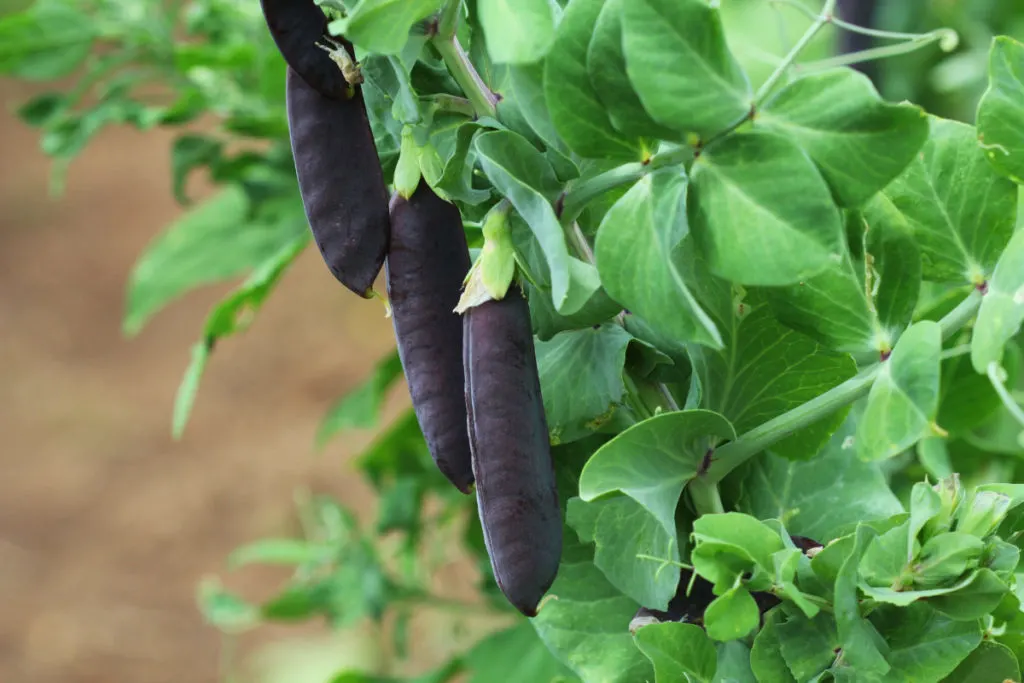
Allow peas to trail over the edges of a hanging basket rather than being grown up trellis or stick supports. The peas not only provide an edible yield. I also think they look lovely, with white or pink flowers (depending on variety) to enjoy before the pods begin to form.
12. Beans
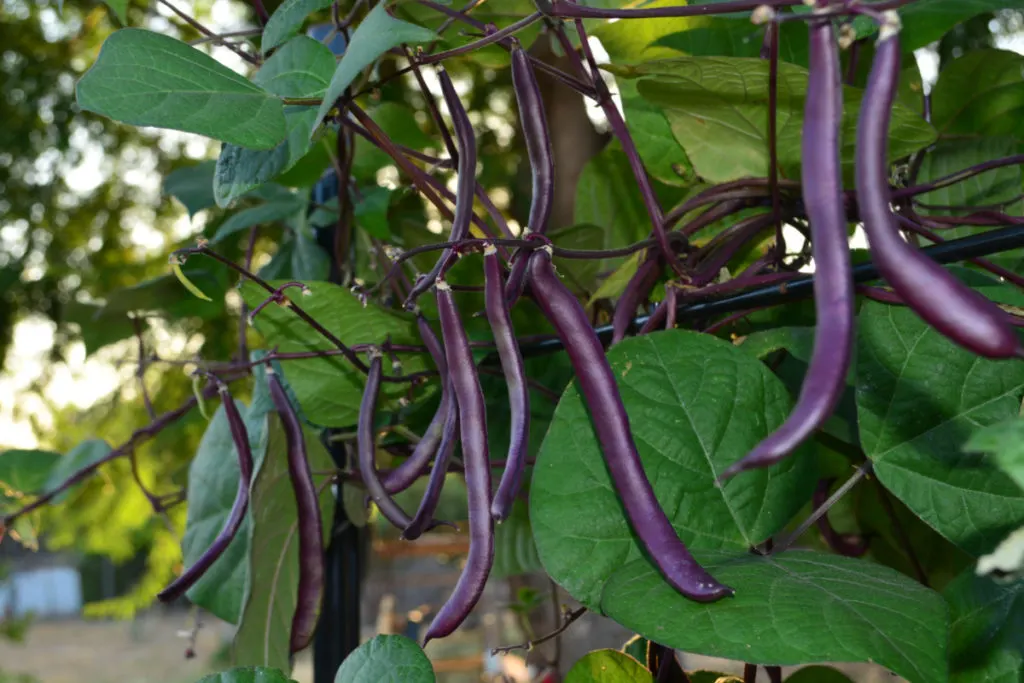
From dwarf bush beans to trailing vine varieties, a range of beans work well in hanging baskets. Simply plant bush beans at the center of the basket on top, or let vining options grow down and trail over the sides.
13. Lettuce
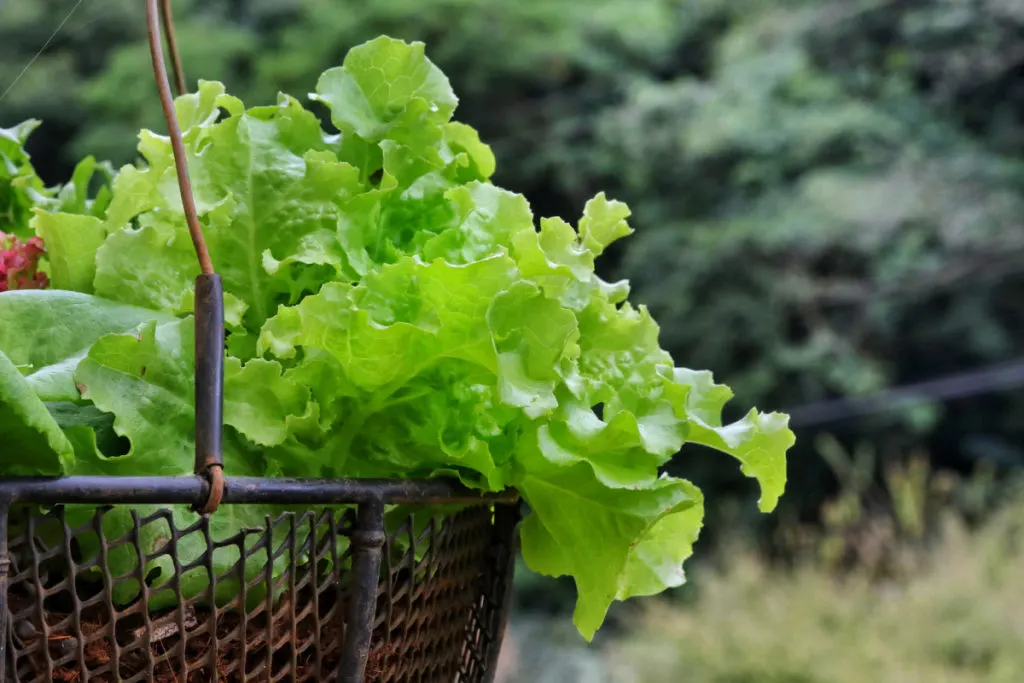
Lettuce comes in many different colors and leaf shapes and forms. It’s an easy and quick-growing veggie to consider. It can also be a delightful ornamental plant too.
Plant a loose-leaf lettuce mix, for example, for an attractive cut-and-come-again display that you can keep going throughout the year in the right location and with the right techniques.
14. Leaf Mustard
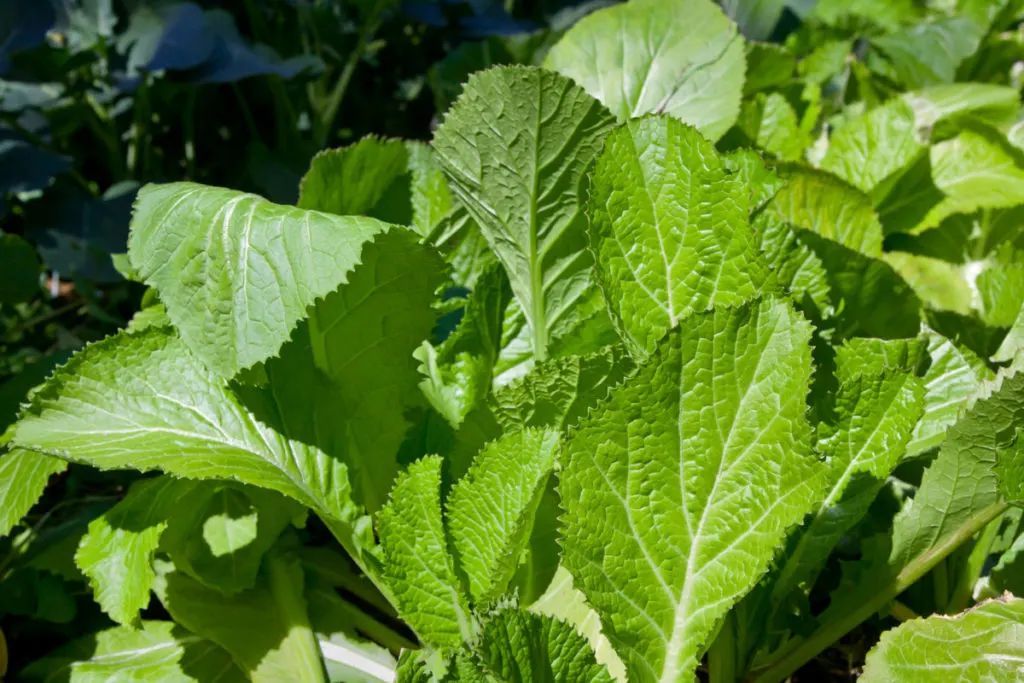
Many leafy mustards grow well alongside lettuce and other greens. There are green and purple mustard varieties to choose from, many with attractive lacy leaves that look great and perform well in a hanging basket.
15. Asian Greens (Pak Choi, Mizuna, Mibuna etc..)
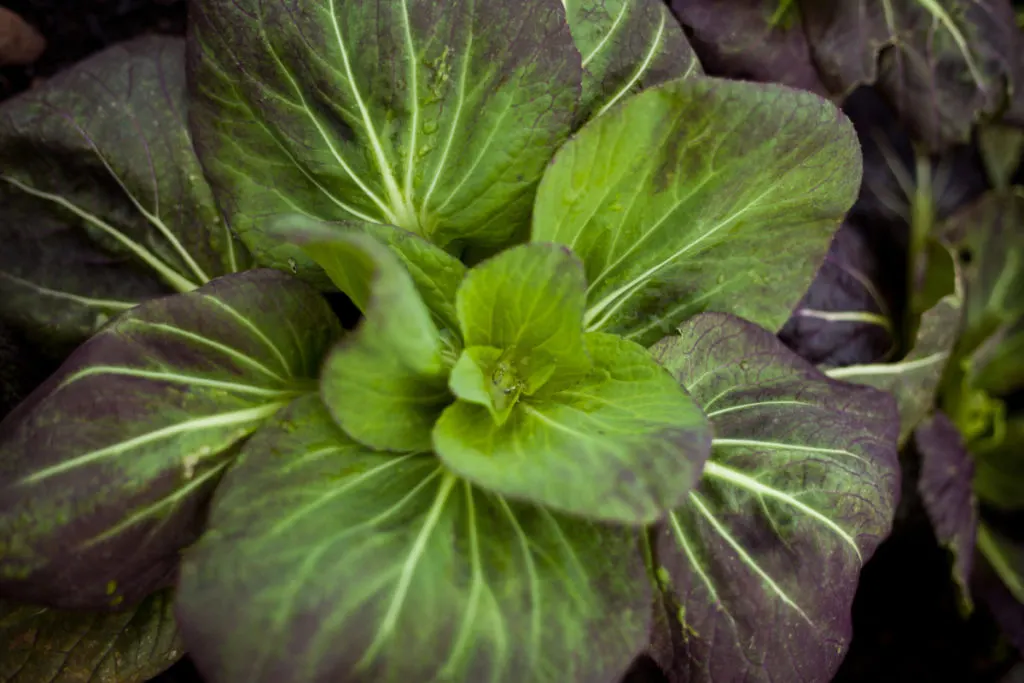
A huge range of Asian greens can work well packed into a hanging basket. As long as you keep your hanging basket watered and supply nutrients as the year wears on, you can grow a range of leafy crops through much of the year – even in winter if your hanging basket is under cover.
16. Spinach
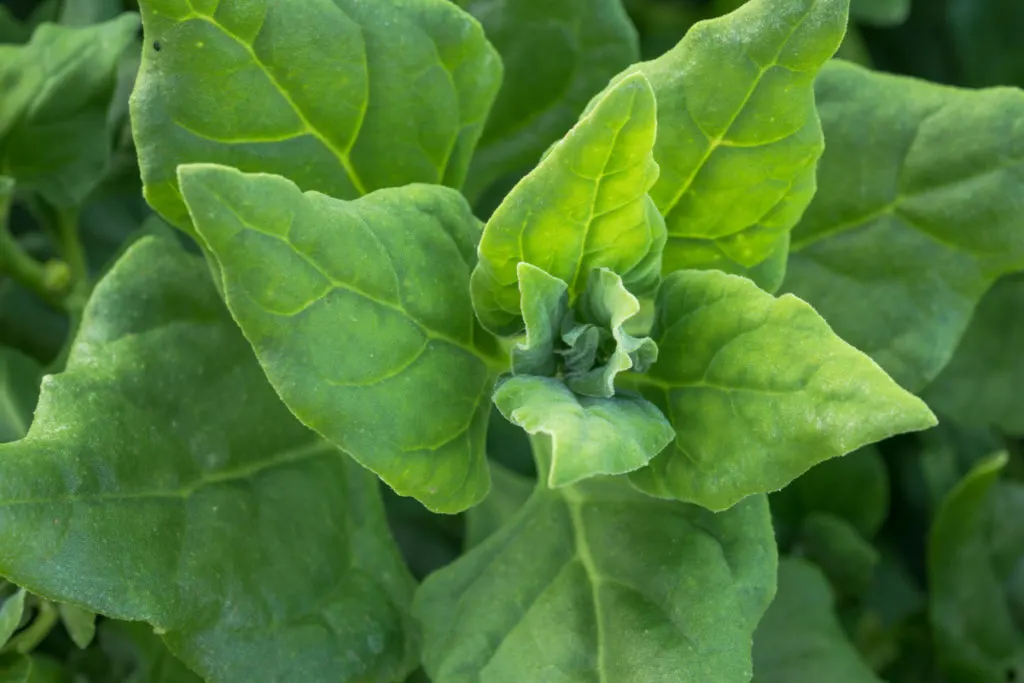
Regular spinach can be a good choice for a hanging basket in a relatively cool and shaded spot. But perpetual spinach can be grown without risk of bolting in hot summer weather, and supply a long-lasting stream of delicious greens, through much of the year.
17. Chard
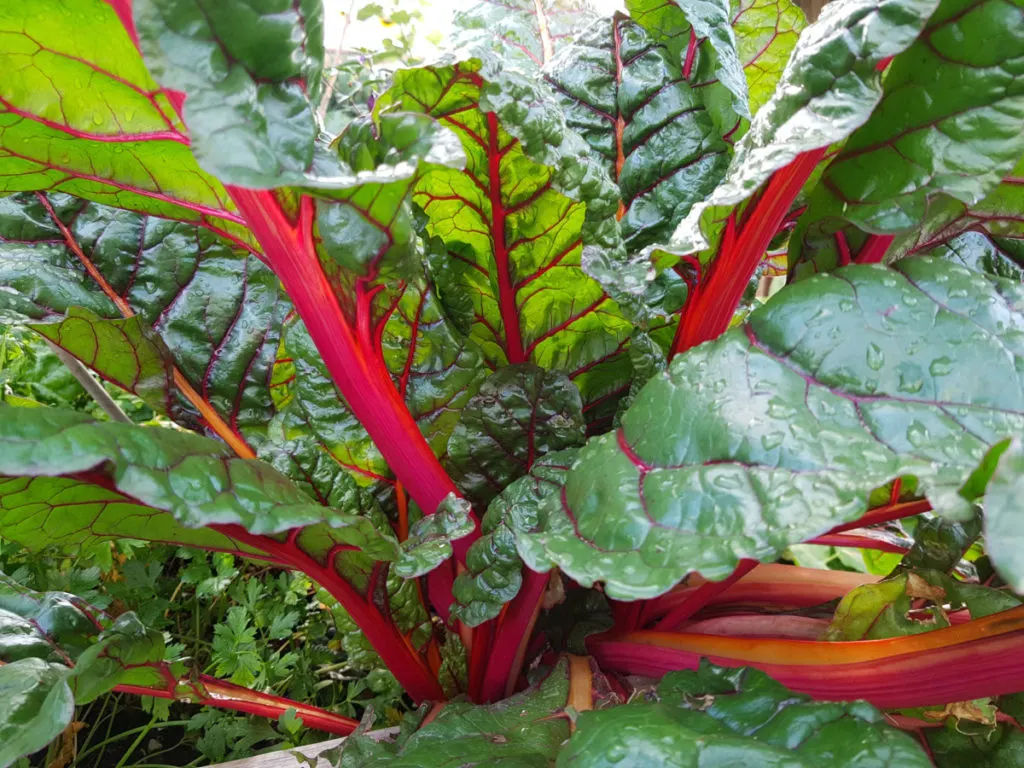
Choose an attractive variety like rainbow chard and the colorful stems will also add visual interest over a relatively long period of time. Harvest little and often, and you can continue to eat from your basket while it still retains its visual appeal.
18. Radishes
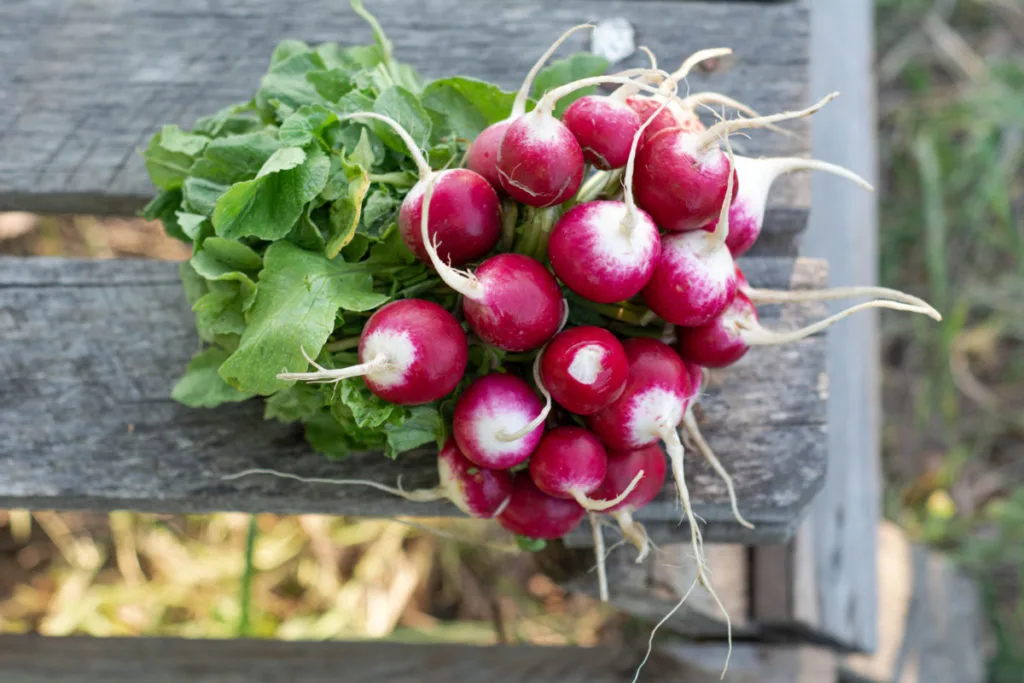
Fast-growing, radishes can be sown successionally for small numbers of radishes over a long period of time. But another great idea involves leaving a few radishes to flower, and cascade over the edges of the basket. A wild profusion of flowers will look lovely, and these flowers will be followed by hundreds of edible radish seed pods.
19. Spring onions
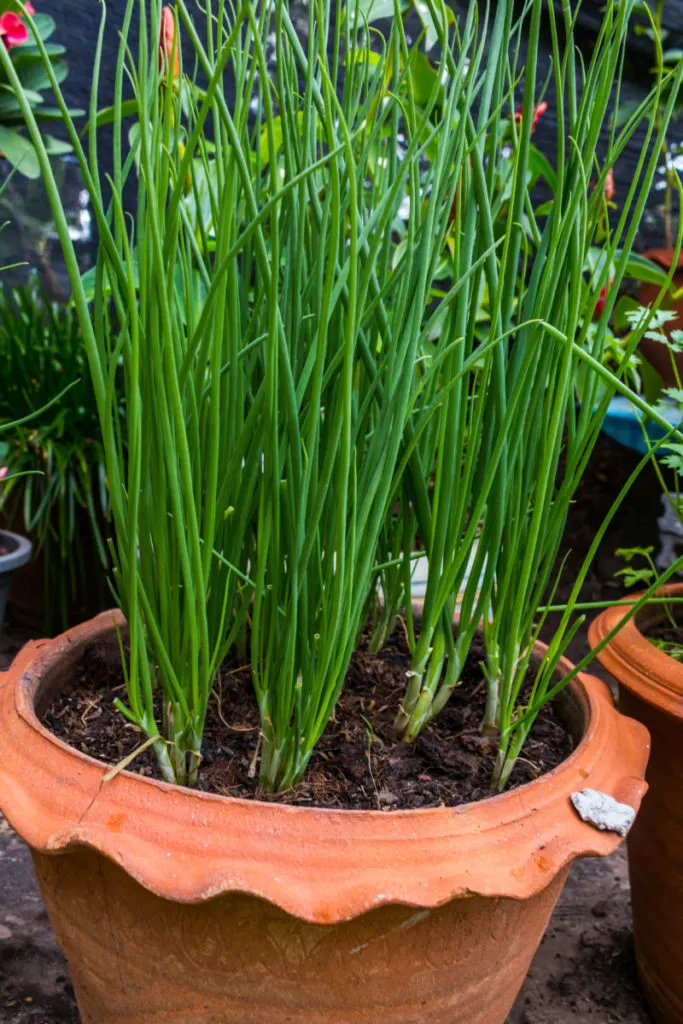
In your edible hanging basket, you can also squeeze in some spring onions. These don’t take up much space at all, and will be a great addition to your summer salads.
20-27. Edible Flowers For Hanging Baskets
In addition to growing the fruits and vegetables mentioned above, you can also grow a range of edible flowers, such as:
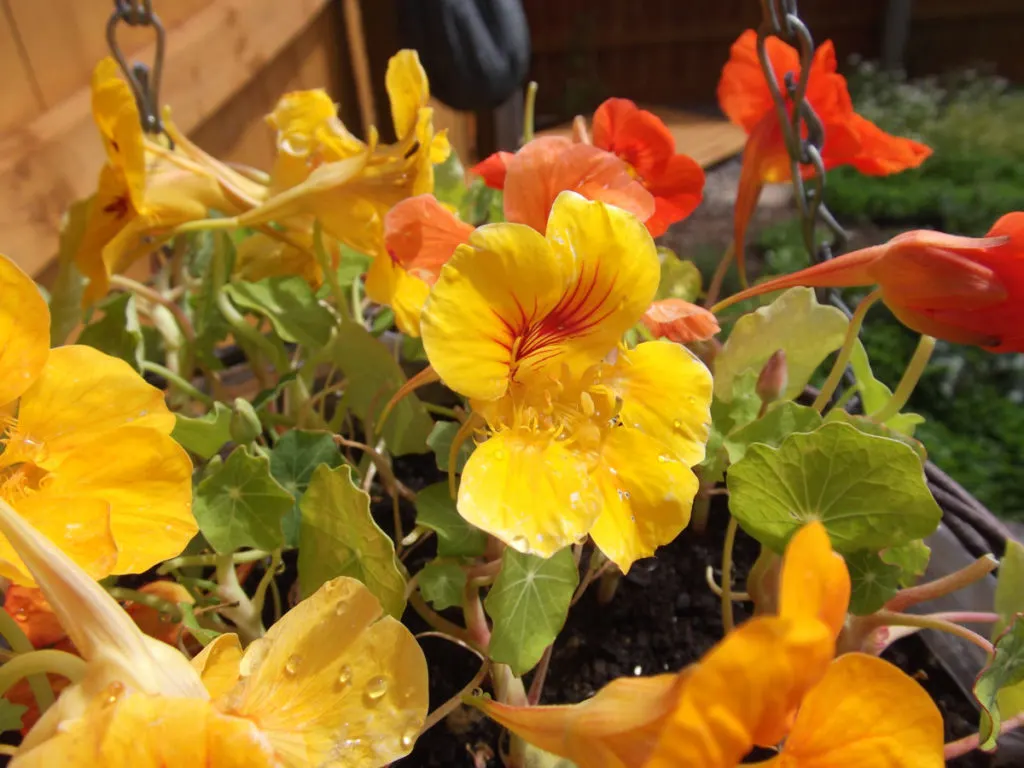
- nasturtiums
- violas
- pansies
- calendula
- French marigolds
- chrysanthemums
- dianthus
- fuchsia (for edible fruits formed after flowering – certain varieties taste better than others)
28-37. Culinary Herbs For Hanging Baskets
A range of different culinary herbs do well in hanging containers. Some great choices to grow include:

- thyme
- marjoram
- oregano
- sage
- basil
- mint
- lemon balm
- hyssop
- parsley
- chives
Different herbs will grow in baskets in full sun (Mediterranean herbs such as thyme etc.). Others, like parsley and chives will do better in the shade. Many herbs will not only provide an edible yield, but also help by attracting beneficial wildlife, and perhaps by repelling certain pests.
Tips for Hanging Basket Success
No matter what you choose to grow in your hanging baskets, there are a number of important things to bear in mind. Here are some tips for hanging basket success:
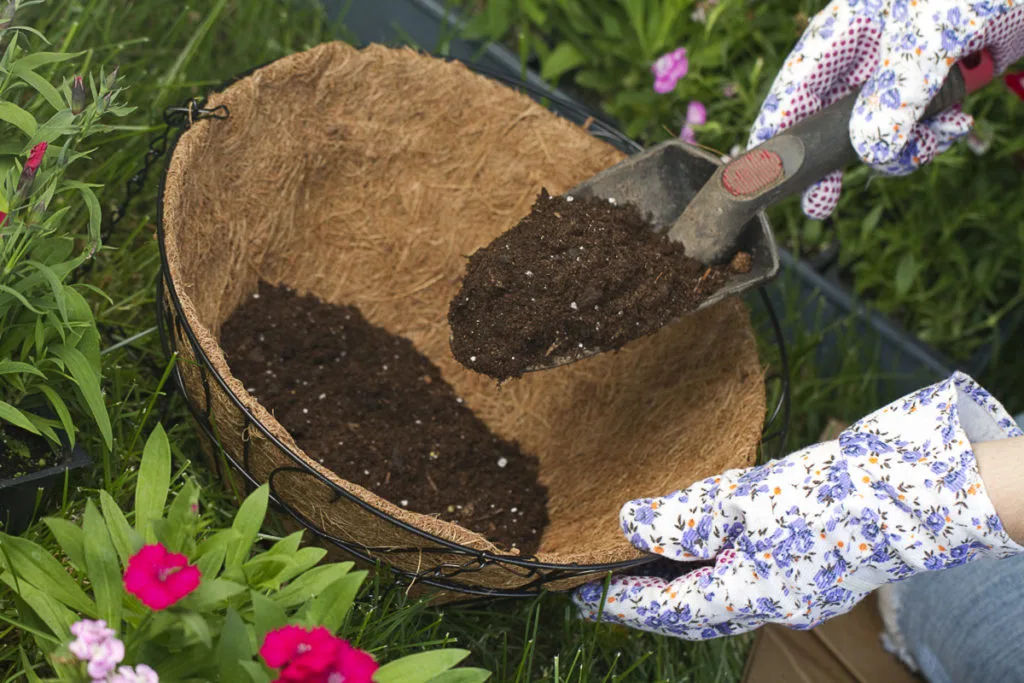
- Choose the right size basket or hanging container for your needs. (Certain plants will, of course, require more space and depth of growing medium for their roots than others.)
- Remember, you don’t have to buy hanging baskets. You can use a number of different items/ materials to make your own hanging baskets and containers.
- If you’re using a basket that requires a liner – consider sustainable options that aid in water retention, such as moss, mulches, or coconut coir.
- Choose the right growing medium for your baskets. For most edible plants, one rich in organic matter, with plenty of homemade compost is ideal. A mix high in organic matter will help to retain water too.
- Hanging baskets will dry out more quickly. It’s important that you water often and well, especially during hotter and sunnier times of the year. This is especially important if you are growing edible crops with high water needs. You may even need to water once a day.
- Even with a nutrient-rich growing medium, you will still need to add fertility over time. Mulch the surface of your hanging basket where there is space, and use liquid fertilizers to give plants a boost.
- Prune, pinch off growing tips and deadhead over the season as plants grow, to encourage plants to bush out and produce more blooms as the year progresses.
Tips for Planting Your Hanging Basket
- When planting, think about the requirements of the specific plants you have chosen. Plant densely, but don’t overdo it or there may not be enough water and nutrients to go around.
- Think about where the hanging basket will be located (in sun, or shade, for example) and choose plants that can cope well with that setting.
- Group plants with similar growing needs together in the same basket. Don’t include plants that need plenty of water with those that like a more arid environment, for example.
These are just a few tips to help you create your own beautiful edible hanging baskets or other hanging containers where you live.

Get the famous Rural Sprout newsletter delivered to your inbox.
Including Sunday musings from our editor, Tracey, as well as “What’s Up Wednesday” our roundup of what’s in season and new article updates and alerts.

